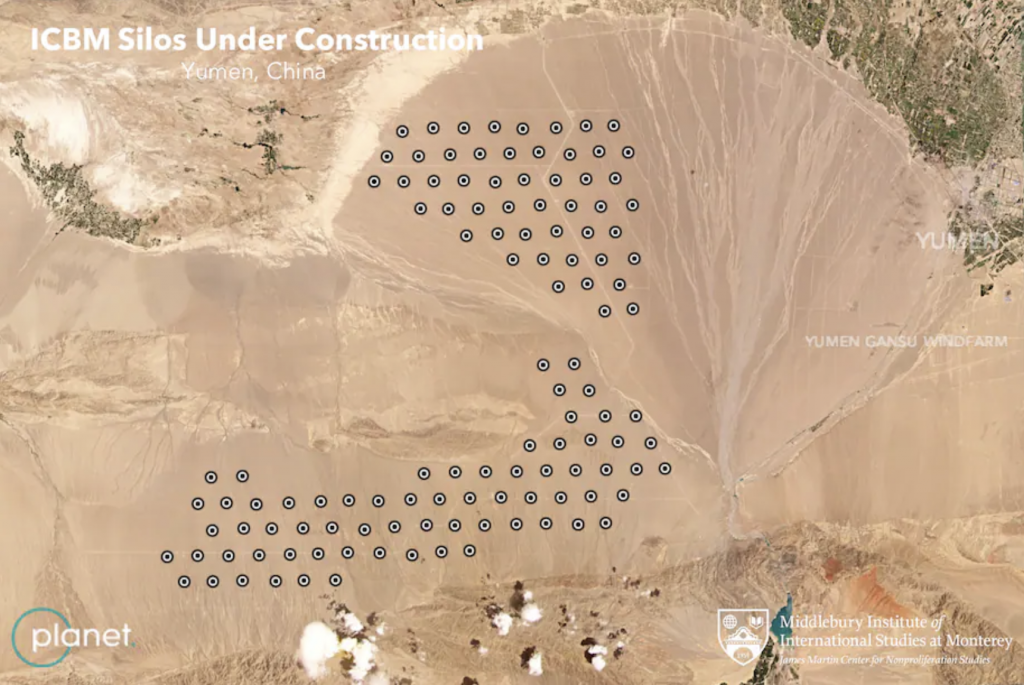We can move from the microscopic things that will kill us to the very big things that will kill us. Nuclear missiles.
Because satellite photography from late June indicated that China is presently building over 100 ICBM silos in its western deserts. China has long had nuclear weapons, but has also long kept its arsenal small, compared to the two nuclear behemoths: the United States and the Soviet Union/Russia. But you don’t begin building over 119 missile silos unless you intend to build ICBMs.
To be clear, this doesn’t mean that China will build 119 missiles. More than likely it’ll be a very expensive and potentially deadly shell game. How many missiles are underneath the silo covers? Can you keep track of them? But even if China builds a fraction of 100, modern ICBMs come with multiple independent reentry vehicles (MIRVs) that allow a single missile to target several cities independently.
We also know that China has been building shorter and more intermediate range ICBMs. But some of those are thought to be equipped with conventional warheads, designed to target and sink American supercarriers in the Pacific. The goal to deny American sea and airpower effective bases to defend Taiwan or other allies in the South China Sea.
We know about this most recent buildup because of a Washington Post article that used satellite photography to pinpoint those new silos.

Of course this isn’t news to the defence and intelligence agencies. For sometime now they’ve been warning of China’s build-out of its military capacities. The question will be is how does the United States and her allies respond?
Credit for the piece goes to Planet/Center for Nonproliferation Studies.
